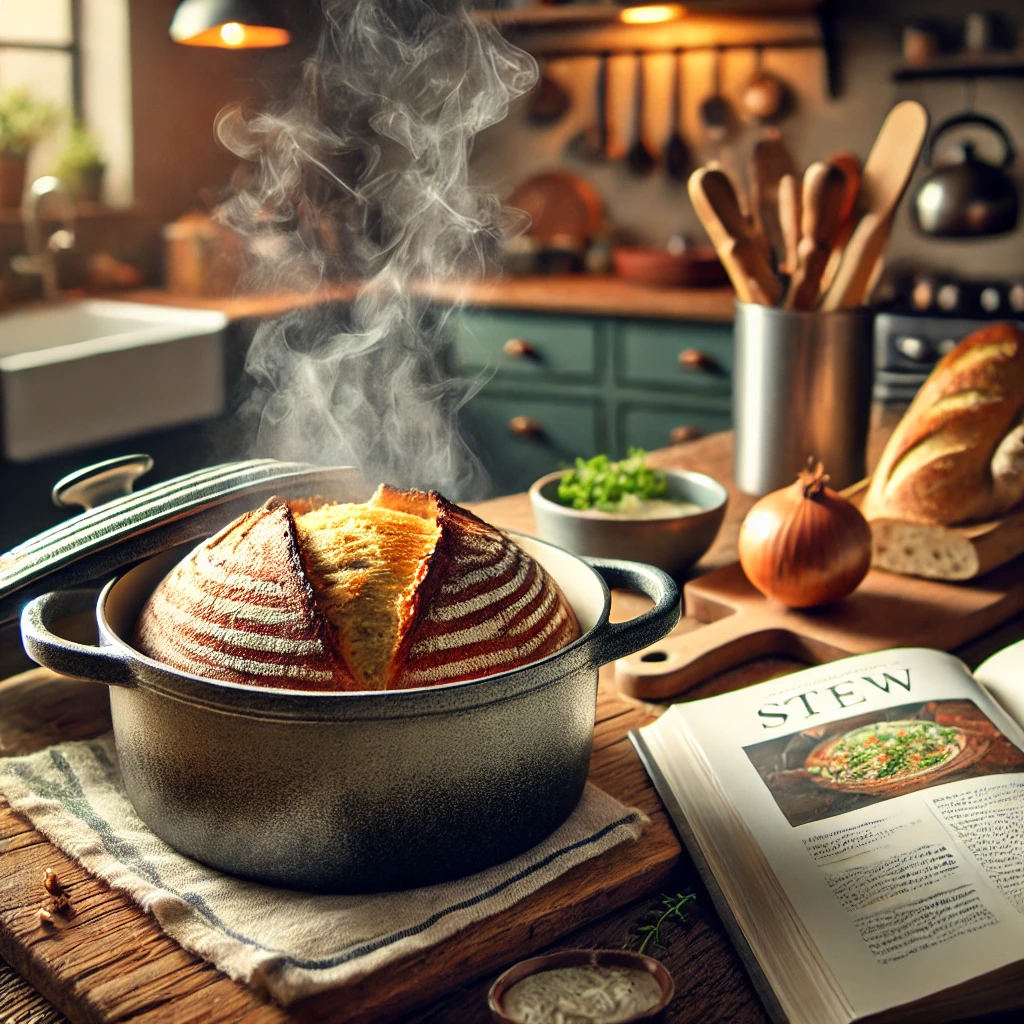
What Is a Dutch Oven?
A Dutch oven is a thick-walled, heavy-duty cooking pot with a tight-fitting lid. Traditionally made from cast iron, it retains and distributes heat evenly, making it perfect for slow cooking, roasting, baking, and even frying. Modern versions may be enameled, reducing the need for seasoning and making cleanup easier.
Why You Need a Dutch Oven in Your Kitchen
Dutch ovens are incredibly versatile and can be used for:
- Slow cooking: Ideal for stews, soups, and braised meats.
- Baking: Perfect for making artisan-style bread in a Dutch oven.
- Roasting: Great for roasting meats and vegetables in a Dutch oven.
- Frying: Works well for deep frying with consistent heat retention.
- Camping: A Dutch oven can be used directly over an open fire or hot coals.
For a more detailed guide on cookware, check out Lodge Cast Iron’s official guide.
Dutch Oven Cooking Tips: How to Use It Effectively
Using a Dutch oven properly ensures better cooking results and longevity of the pot. Here’s a step-by-step guide:
1. Preheat Your Dutch Oven
- When using it on a stovetop, always preheat your Dutch oven gradually to avoid thermal shock.
- If baking, preheat your Dutch oven in the oven before adding dough or ingredients to ensure even cooking.
2. Season Your Cast Iron Dutch Oven (If Needed)
- If you have a bare cast iron Dutch oven, season it by coating the interior with a thin layer of oil and baking it at 400°F (200°C) for an hour. This step helps maintain the surface and prevents rust.
3. Dutch Oven Cooking Tips for Best Results
- Use medium to low heat to avoid burning food, as cast iron retains heat for a long time.
- For soups and stews, always layer flavors by browning ingredients first before adding liquids. This enhances the depth of taste in a Dutch oven.
- Keep the lid on your Dutch oven to retain moisture unless you need to crisp or reduce liquid for a thicker consistency.
For more seasoning tips, check out this guide on cast iron maintenance.
4. Baking Bread in a Dutch Oven
- First, preheat the Dutch oven inside your oven at 450°F (230°C).
- Then, place your dough inside and cover with the lid to trap steam, which helps create a crispy crust.
- Finally, remove the lid of your Dutch oven after 20–30 minutes to allow browning.
5. Cleaning and Maintenance
- For enameled Dutch ovens, avoid metal utensils to prevent scratching.
- Always wash your Dutch oven with warm water and mild soap; harsh scrubbing can damage the surface.
- After washing, dry your Dutch oven thoroughly and apply a light coat of oil for cast iron to prevent rust.
Best Dutch Oven Cooking Recipes to Try
- Classic Beef Stew – Slow-cooked tender beef with vegetables for a comforting meal in a Dutch oven.
- No-Knead Bread – Crusty, artisan-style bread baked effortlessly in a Dutch oven.
- Whole Roast Chicken – Juicy and flavorful with crispy skin, cooked perfectly in a Dutch oven.
- Dutch Oven Chili – A rich and hearty meal, perfect for cold days.
- Mac and Cheese – Creamy, cheesy perfection baked in a Dutch oven.
For more recipes, explore Food Network’s Dutch oven recipes.
Conclusion
A Dutch oven is an essential kitchen tool that offers incredible versatility. Whether you’re a beginner or a seasoned cook, mastering Dutch oven cooking tips can elevate your meals. With proper care, a high-quality Dutch oven can last a lifetime, making it a worthy investment for any home chef.
Have you tried cooking with a Dutch oven? Share your favorite recipes in the comments below!


